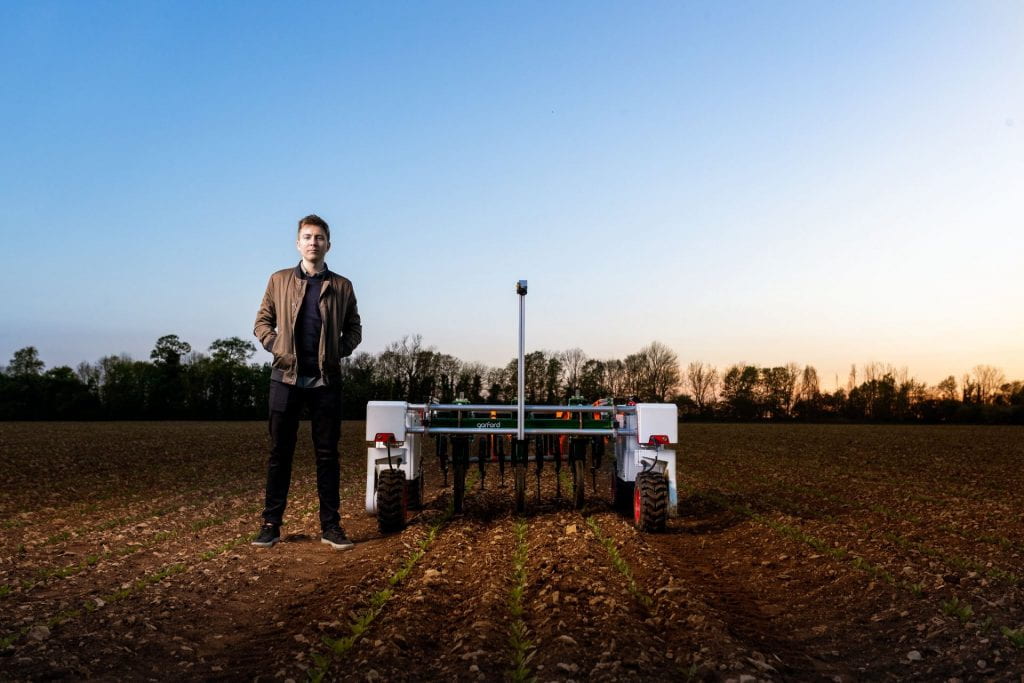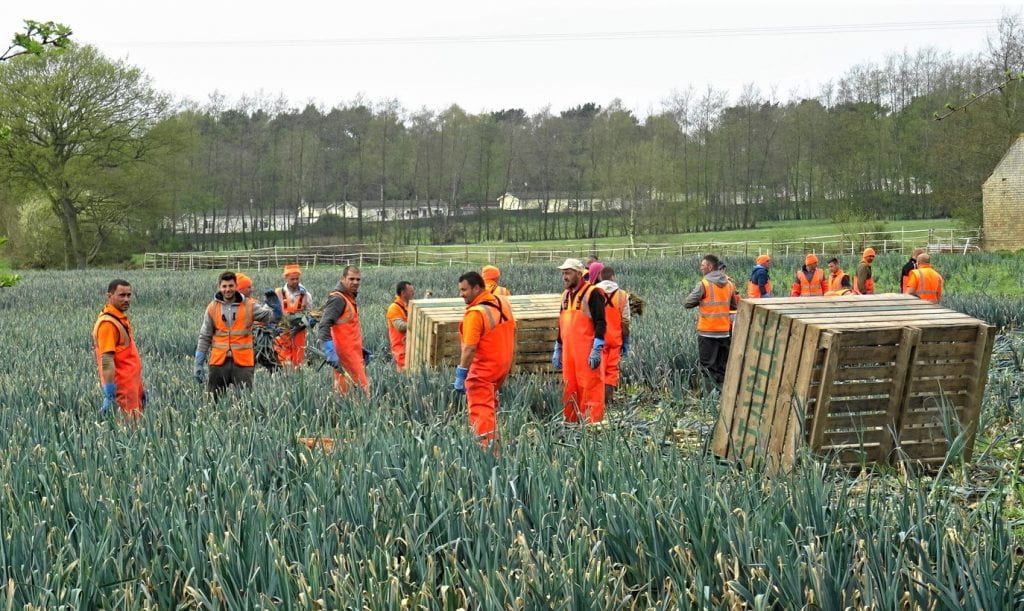By Lydia Medland.
In the recent launch of the new migration research project MigResHub, agricultural labour economist Professor Philip Martin stated that he saw the future of farming in the USA as reliant on ‘machines and migrants, buffered by imports’. This is indeed the direction in which commercial agriculture is going. However, we don’t need to accept this trajectory. It means relegating agricultural work to the bottom of the pile for good and accepting as a given that people don’t want to pick fruit (when they have other options). This is not necessarily true, at least in the UK.
My new project on risk and resilience looks at work in horticulture, where much seasonal labour is required, so I want to focus particularly on the ‘migrants’ part of Martin’s triple prognosis for the future of the food system. Yet, the dominance of both machines and imports in the food security debate makes them important to comment on too.
Lang reasons that, due to Britain’s imperial past, we are used to assuming that other countries will feed us, but he argues that we should be wary of doing so for security as well as sustainability reasons. As I found in my last project, Moroccan workers producing food for Europe’s imports experience pressures such as low wages, a lack of respect and intense time pressures. Put simply, they face the same patterns of pressures as farmworkers within the UK. A reliance on imports therefore displaces social and environmental challenges to other places.

Machines have always reduced labour in agriculture, which makes food cheaper but not always better. This direction of travel, spearheaded most recently by proponents of AI and robotics, is at least partially self-propelled by those involved in producing ever bigger and more sophisticated machinery. Huge increases in research funding for automatisation contribute to an industry that has established a narrative of erasure of the majority of workers from agriculture in food systems. (Searching in the UK Research and Innovation Gateway for projects involving the terms ‘robot, agriculture, food and labour’ brings up 1,169 relevant research projects funded in 2019, compared with fewer than five a year between 2000 and 2005.)
The public debate over agriculture and migration has intensified in recent years. While farmers call for large numbers of temporary seasonal workers, nationalist sentiment keeps up pressure for tight restrictions on migration across the board. In addition, discomfort regarding working conditions plays on the conscience of consumers. This mix of concerns appears related to the haste towards robotisation. Government and industry specialists are now charmed by ‘agricultural modernisation’ (robotics and AI) and characterise temporary worker migration as a short-term fix before the mechanical hands are ready to pick. In 2018, Michael Gove re-introduced the UK’s temporary migration programme by saying that ‘… automated harvesting solutions are not universally available and so in the short term, this pilot will support farmers during peak production periods.’ Migration as a short-term fix is a convenient discourse, but insufficient. Not every task is easily mechanised, and while machines work best on large flat lands, the UK has many smaller hilly fields.
Temporary worker permits in agriculture are not new. We could say that the seasonal agricultural workers, who came to Britain at the end of the Second World War, took over from the Women’s Land Army. There is also a longer continuity of drawing on those at the periphery of the workforce for seasonal labour. In earlier times, Irish workers and Travellers were among those who met labour demands at peak times. What is common to all these temporary workers is their position in the labour market, which is low.
The seasonal agricultural workers scheme (SAWS) is the UK’s temporary migration programme; it began as a volunteer scheme after the war and became SAWS in 1990. Access to the EU labour market led to its closure in 2014 as policy makers argued that freedom of movement made SAWS unnecessary. However, this ending turned out to be temporary. Following the Brexit vote in 2016, farmers feared, and began to experience, a lack of access to willing workers. A ‘pilot’ SAWS was launched again in 2018, initially with quotas of just 2,500 workers, which has been increased to 10,000 workers from 2020 onwards. The continuity of demand is clear.

Rather than just focusing on SAWS or migrant workers we also need to consider agricultural work itself. The prognosis of machines, migrants and imports takes as a given that workers, given full access to a diverse labour market, will not choose to work in agriculture. Yet, could this be more about the agricultural model than any naturalised preference of workers? Intensive production systems are indeed unattractive to many as a career choice, especially if you don’t own the land.
Nevertheless, many people are interested in producing food. In the UK, demand for allotments has quadrupled in recent years, and growing at home boomed under lockdown. This year, record numbers of non-migrants signed up to pick fruit during the COVID-19 pandemic, and while many didn’t end up on the farm, or didn’t last long, this shows an interest in the work. Perhaps for those that dropped out it isn’t them who should be blamed, but rather the system. Some large UK farms are now described as ‘plantations’, with monocultures that require absolute obedience from both nature and worker. Rejecting this kind of workplace regime – which only became dominant after a squeeze on farms from retailers in the 1990s – doesn’t mean people don’t want to grow food at all.
The growing Land Workers Alliance, representing sustainable growers and farmers, is testament to the increasing interest among young people. So too is the LION (Land In Our Names) movement of black people and people of colour gathering to access land for sustainable projects in the UK. These movements are challenging assumptions about who can be a grower, and a farmer. If opportunities are provided for this to become decent and sufficiently paid work, an able, diverse and motivated workforce may just be available.
Does it matter that the UK relies on migrant workers? I think it’s more important that we don’t naturalise the assumption that only migrants do farm work. The ‘Pick for Britain’ campaign set up early in the pandemic had the benefit of reconnecting British people with the idea (and for some the reality) that we too can pick fruit. As people rallied to feed the nation, it’s just possible that the public became more aware of the essential nature of this work. Alongside machines and imports, it’s possible to aspire to a future in which migrants and non-migrants choose jobs that bring in the harvest – and that they are supported to do so.
Lydia Medland is a Senior Research Associate in the School of Sociology, Politics and International Studies at the University of Bristol. She currently has a British Academy Postdoctoral Fellowship to study risk and resilience in the UK’s changing food system. She writes regularly on her blog, Eating Research.
Related MMB blogs include ‘Disposable workers, essential work: migrant farmworkers during the COVID pandemic’ by Manoj Dias-Abey.

